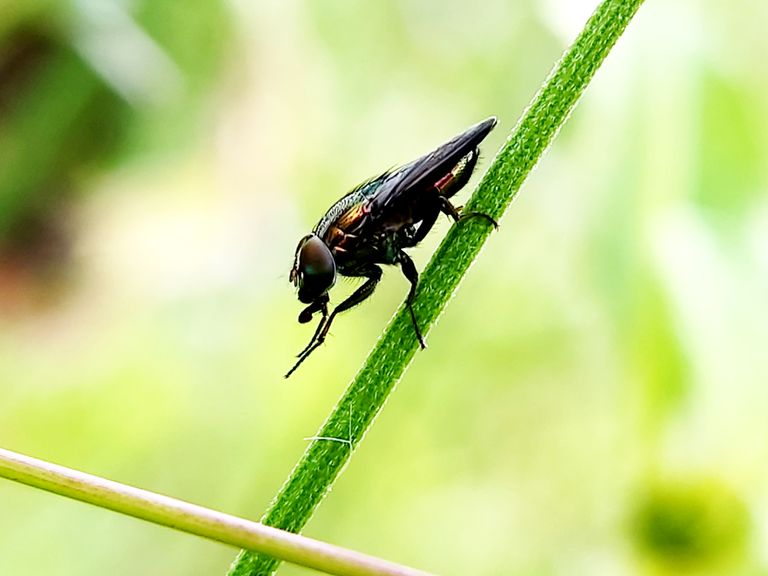
The Black Soldier Fly is an order of Diptera whose physical characteristics are similar to wasps. The distribution of the black soldier fly is throughout most of the United States and Europe, including the Iberian Peninsula, southern France, Italy, Croatia, Malta, the Canary Islands and Switzerland, on the Black Sea coast of Russia in the Krasnodar Territory, in the Afrotropics, Australasia, Palaearctic realms. east, the Nearctic realm, North Africa, South Africa, and the Indomalaya realm. In Indonesia itself, this black fly is starting to be looked at for development because of the various benefits obtained.
The morphological characteristics of the adult H. illucens fly are about 16 millimeters in size which are dominated by black color, with metallic reflections ranging from blue to green on the chest and sometimes a reddish color of the belly tip. The head is wide with antennae that are twice the length of the head. The legs are black with whitish tarsi. The wings have membranes; at rest, they are folded horizontally on the stomach and overlap.
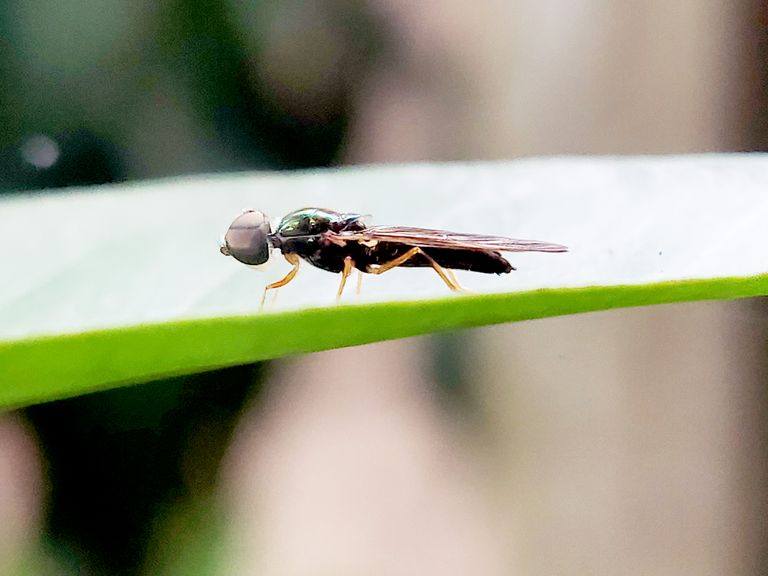
H. illucens is a fly that is similar in size, color, and appearance to a wasp.
The overall life cycle from egg to adult averages about 45 days. An adult female lays between 206 and 639 eggs at a time. These eggs are usually deposited in crevices or on surfaces above or around decaying material such as manure or compost and hatch in about 4 days.
The newly emerged larva is 1.0 millimeter in size, capable of reaching 2.5 millimeters in length and 0.10 to 0.22 grams in weight at the end of the larval stage. Larvae can feed on a variety of organic materials, adapting to foods with different nutritional content. The larval stage lasts from 18 to 36 days, depending on the feeding substrate given to the larvae, whereas the post-feeding (prepupal) stage lasts about 7 days. The length of the larval stage can be delayed for months due to low temperatures or lack of food. The pupal stage lasts from 1 to 2 weeks.
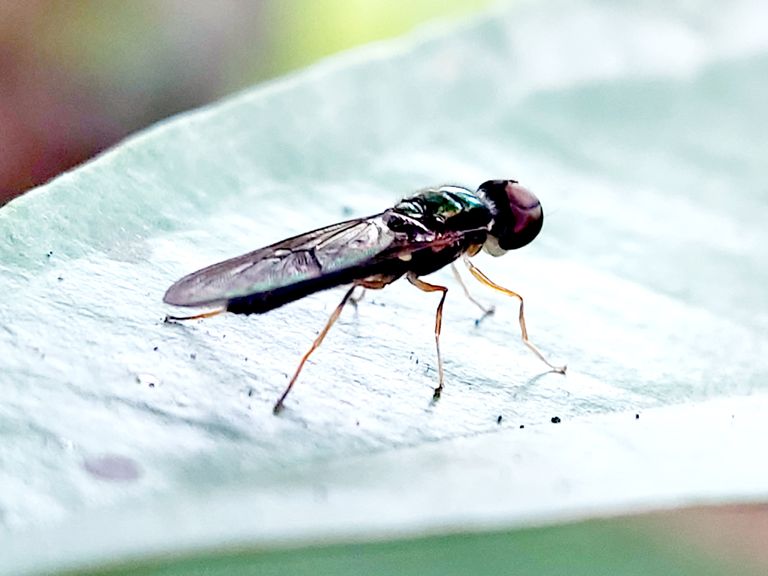
Larvae and adults are neither considered pests nor vectors. In contrast, black army fly larvae play a similar role to red worms as important decomposers in breaking down organic substrates and returning nutrients to the soil. The larvae have a voracious appetite and can be used to compost household food waste and agricultural waste products. In addition, black army fly larvae (BSFL) are an alternative protein source for aquaculture, animal feed and human nutrition.
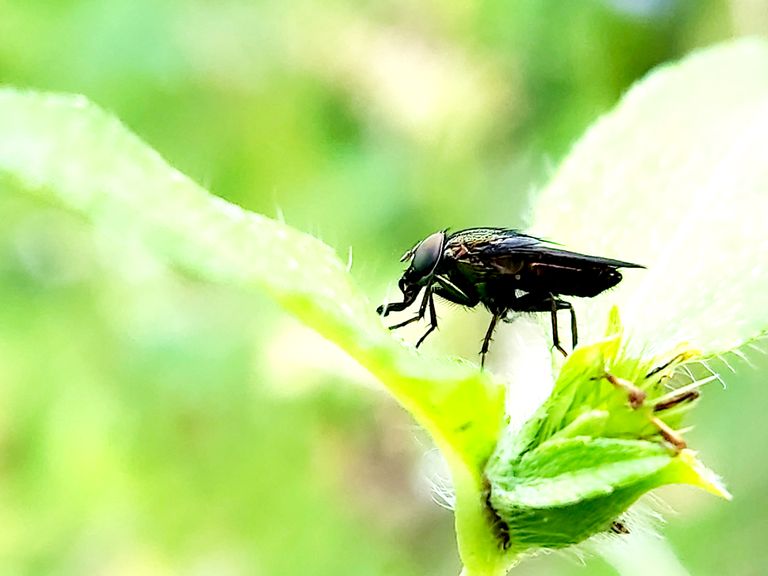

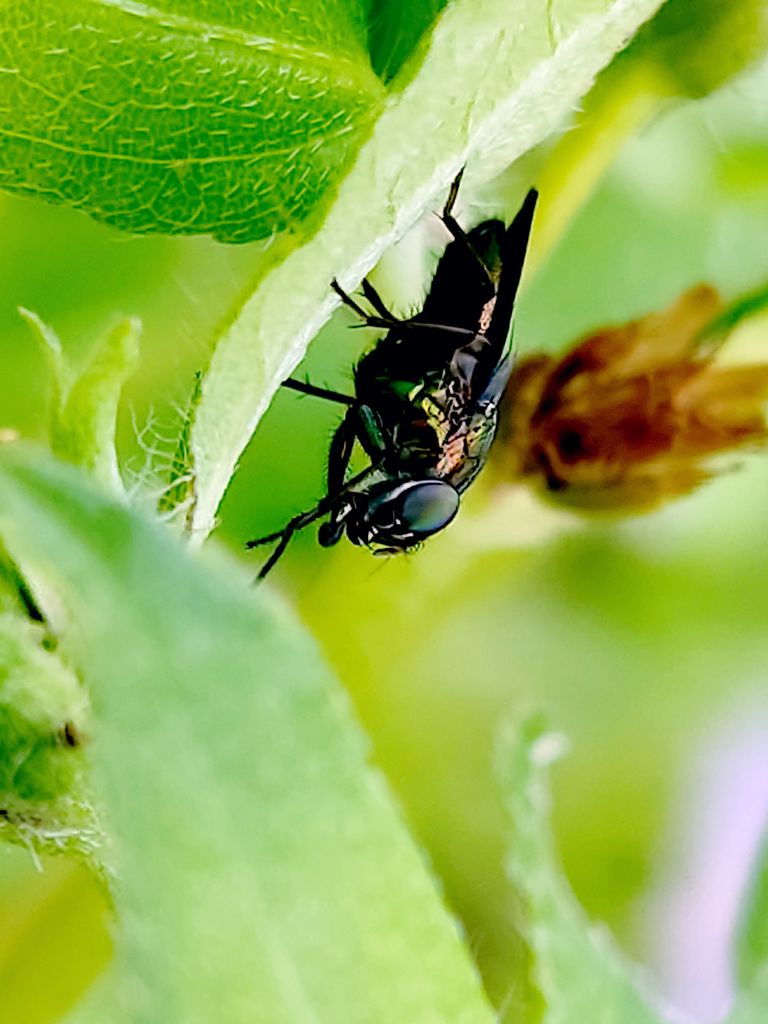
MetaData of Pict:

all the photos above were taken by @resyiazhari
Text Source:
Translate from https://distanpangan.baliprov.go.id/lalat-tentara-hitam-black-soldier-fly-serangga-yang-beragam-manfaat/